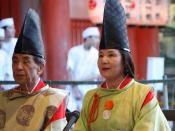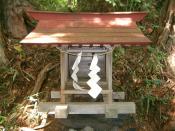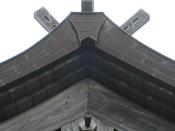Shinto is the faith of the Japanese people and as old as Japan herself. Shinto is the main religion of Japanese people besides Buddhism. Shinto is rooted in the beliefs and traditions of Japanese nation. Shinto has no script like Christianity has the bible yet it does not have a founder. It only has a very loosely-organized priesthood. We can not regard Shinto as an 'ism' indeed it's only a teaching. We can say that it's the all-pervading way. 'Kami' means God or deity, or sometimes soul. Shinto implies spontaneous following of the 'Way of the Gods'. "Shinto gods" are called kami. They are sacred spirits which take the form of things and concepts important to life, such as wind, rain, mountains, trees, rivers and fertility. Humans become kami after they die and are revered by their families as ancestral kami. Shinto's most important kami is the Sun Goddess Amaterasu.
After World War II, Shinto and the state were separated. Shinto is not adopted by the Japanese State but it's a religion of the heart, it pervades the life of Japanese people as a natural and real spiritual force. It is a creative or formative principle of life. The Shinto principle is the background of Japanese culture, code of ethics, fine arts, family and national structure. Shinto was the earliest Japanese religion, we can date back its beginnings at least to the middle of the first millennium B.C. Approximately in the sixth century A.D, the Japanese began a period of rapid adoption of continental civilization. Before then, it had existed as an amorphous mix of nature worship, fertility cults, divination techniques, hero worship, and shamanism. After the sixth century the word Shinto, or "the Way of the kami (gods or spirits)," came into use when the Japanese started...


